» Site Navigation

1 members and 640 guests
Most users ever online was 47,180, 07-16-2025 at 05:30 PM.
» Today's Birthdays

» Stats

Members: 75,916
Threads: 249,118
Posts: 2,572,201
Top Poster: JLC (31,651)
|
-
Re: A Lesson in Basic Genetics
Can you tell which parts of this graphic are right, and which are wrong?
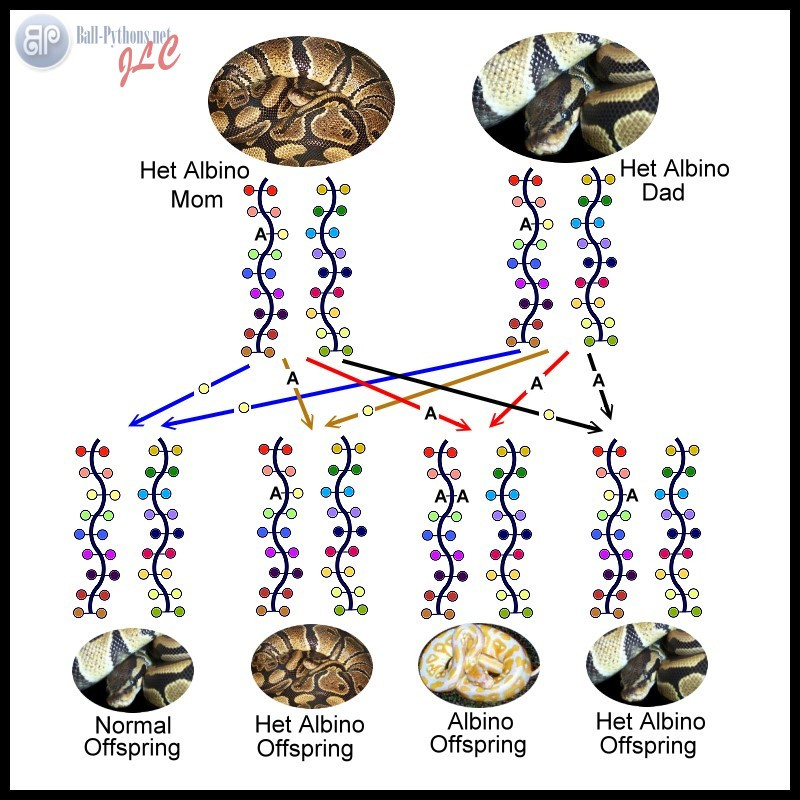
Right: The pictures of the snakes. And a het albino x het albino mating does produce 25% normal offspring, 50% normal-looking het albino offspring, and 25% albino offspring.
Wrong: The DNA graphics, gene pairs, DNA transmission from parents to offspring. And the allele symbols do not follow accepted rules.
Nearly everything wrong can be traced back to one incorrect belief: that a DNA molecule is made up of two alleles side by side. This would require the parent DNA molecules to unzip down the length of the molecule. Then the mother’s half molecule fuses with the father’s half molecule in the fertilized egg. Egg fertilization does not work that way. Two alleles are in two separate DNA molecules, and those two DNA molecules are in separate chromosomes.
Also, the gene symbols do not follow Gregor Mendel’s upper and lower case convention. Mendel, the father of genetics, defined dominant and recessive alleles in his original paper. He used the “A” and “a” characters to symbolize two alleles, as unknowns can be symbolized in algebra. Upper case “A” was assigned to the dominant allele, and lower case “a” was assigned to the recessive allele. Geneticists have followed this upper and lower case convention ever since.
HOW DNA AND GENES WORK
Picture two shoestrings. Each shoestring is coiled in a spiral. Hold them up side-by-side. A spiral is also known as a helix.

Now picture the shoestrings with a series of colored balls strung along each string.
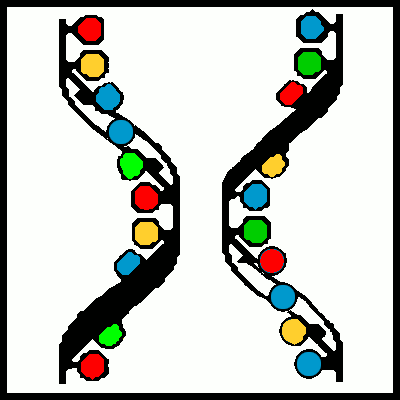
Two corresponding colored balls form a base pair. The base pairs hold the two shoestrings together in a double helix. This is the structure of a DNA molecule. The sequence of base pairs is the genetic code.
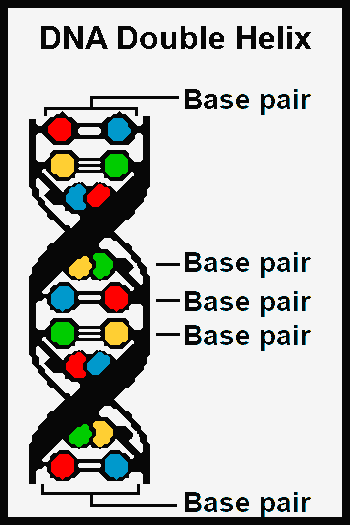
A gene is a segment of a DNA molecule that functions as a single unit. Genes are strung along a DNA molecule. DNA molecules and their genes are found in chromosomes. Many genes have over a thousand base pairs. And many chromosomes have over a thousand genes. Most vertebrates have several billion (yes, billion) base pairs in the DNA.
During most of a cell’s life, a chromosome is an invisible thread. When a cell starts to divide, each DNA molecule replicates into two DNA molecules. And for a very short time each chromosome becomes X-shaped. This is the only time in a cell’s life that the chromosomes are visible.
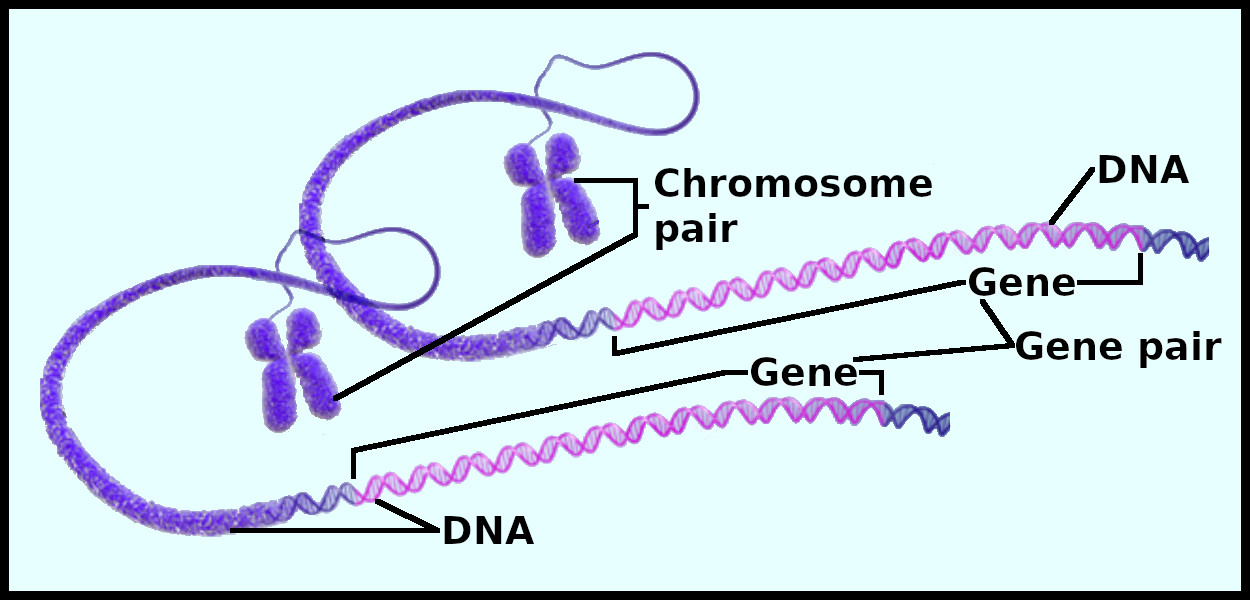
A pair of chromosomes can also be represented as two rods with colored segments. Each colored segment represents a single gene. Each pair of segments represents a pair of genes with a specific residence in the chromosomes, a locus. Locus is pronounced “low cuss”. The plural of locus is loci, which is pronounced “low sigh”. Alleles form gene pairs. Two alleles are in two chromosomes but have only one locus.

Each pair of genes has a different job in determining the look of an animal. It takes many different pairs of normal genes, each controlling a specific job in an assembly line, to make the normal pattern and colors of a snake. If just one normal gene is changed to a mutant gene, the assembly line gets blocked or diverted. And what rolls off the end of the line is not normal.
Genes come in pairs, like socks. In a homozygous gene pair, the two genes are the same. Two normal genes, two albino genes, two pinstripe genes, or two mojave genes. In a heterozygous (aka het) gene pair, the two genes are different. A normal gene and an albino mutant gene, a normal gene and a pinstipe mutant gene, or a lesser mutant gene and a mojave mutant gene. A heterozygote is an individual with a heterozygous gene pair, and a homozygote is an individual with a homozygous gene pair. As ball pythons have something like 25,000 gene pairs, one snake can have both homozygous gene pairs and heterozygous gene pairs.
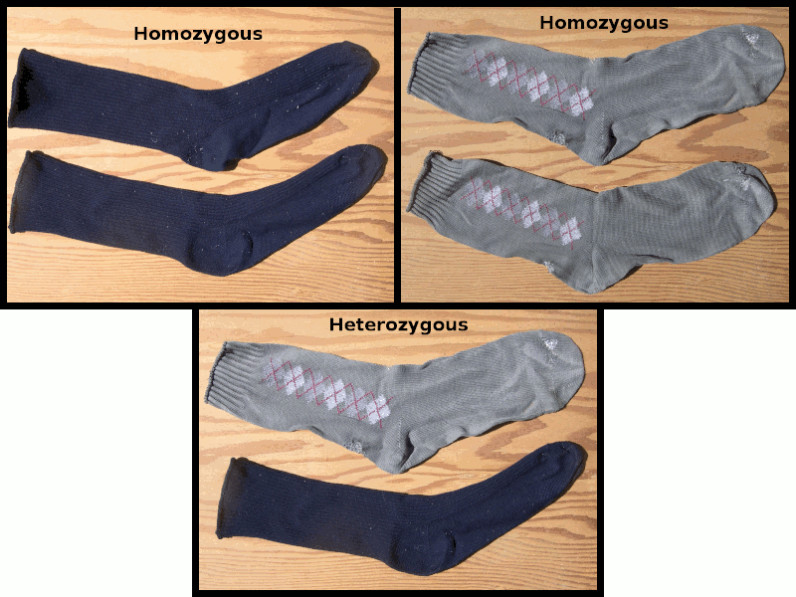
For many years, herpers assumed that all heterozygous snakes looked normal. But appearance has never been part of the definition of “heterozygous”. The appearance of the heterozygote determines whether one allele is dominant, codominant or recessive to the other allele.
For more information about DNA and genes, see the USA National Institute of Health’s Handbook of Genetics, https://medlineplus.gov/genetics/und...g/basics/cell/.
When two animals mate and create young, the father contributes a sperm and the mother contributes an egg. Ball pythons, boa constrictors, corn snakes and many other snakes have 18 pairs of chromosomes. The total number of chromosomes is 36. Sperm and eggs are produced in a two stage process named meiosis. Each sperm or egg gets one chromosome from each pair of parental chromosomes, for 18 chromosomes. A ball python fertilized egg has both the 18 sperm chromosomes and the 18 egg chromosomes, making 18 new pairs of chromosomes in the offspring.
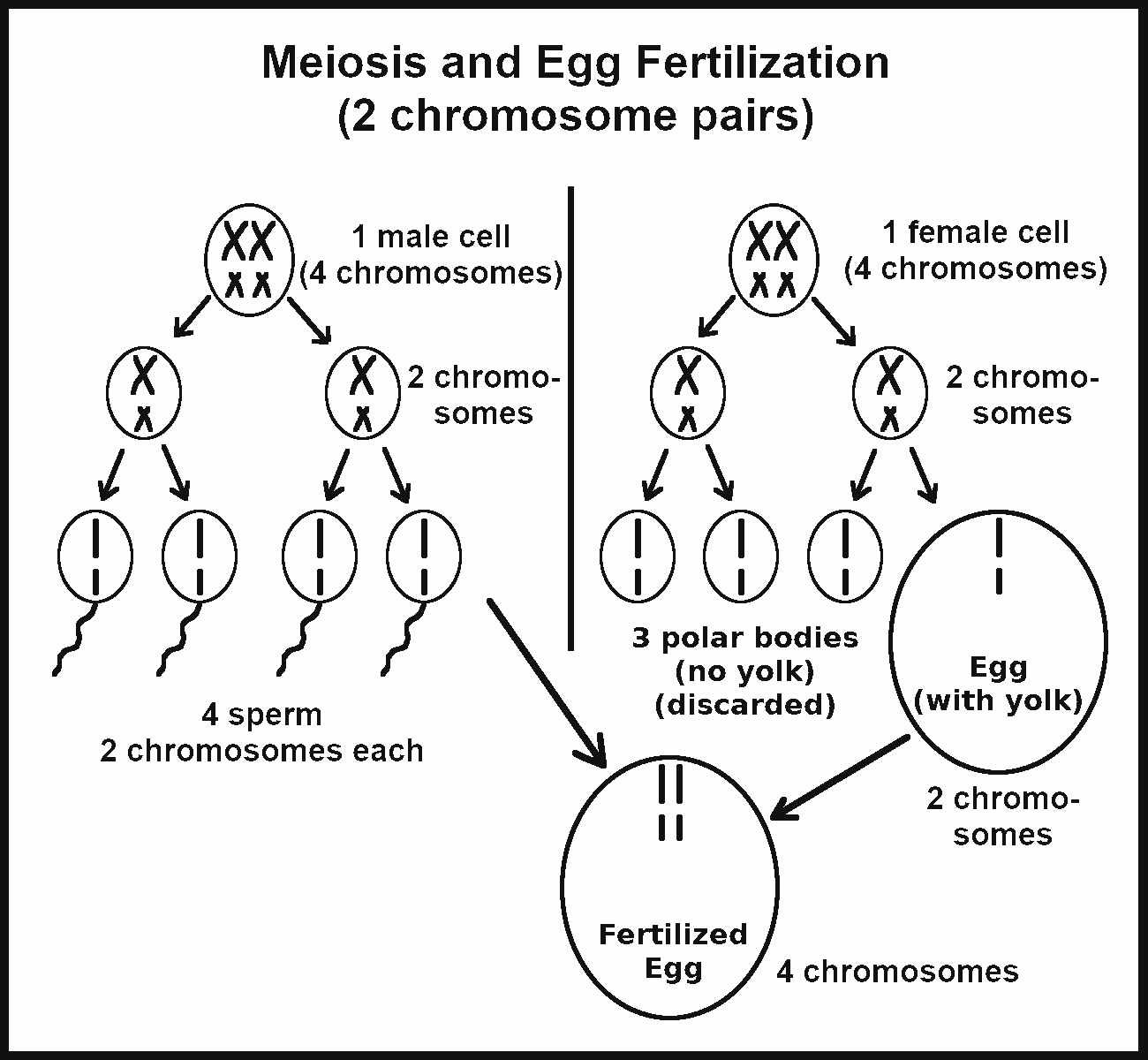
So what happens when I breed XXX to xxx?
Definitions:
Wild type (aka normal, standard) = 1. The most common allele at a given locus in the wild population of a species. 2. The most common look (phenotype) in the wild population of a species.
Mutant (aka abnormal) = 1. Not the most common allele at a given locus in the wild population of a species. 2. Not the most common look (phenotype) in the wild population of a species.
Mendel’s upper and lower case convention is easy to follow when working with the ball python’s albino and normal alleles. The upper case “A” symbol is assigned to the dominant allele, which happens to be the normal allele. And the lower case “a” symbol is assigned to the recessive allele, which happens to be the albino mutant allele.
When mating two het albino (Aa) ball pythons, each egg or sperm gets one member of each gene pair. Half of the mother’s egg cells have a chromosome with a normal allele (A), and half of the eggs have a chromosome with a mutant allele (a). Half of the father’s sperm cells have a chromosome with a normal allele (A), and half of the sperm have a chromosome with a mutant allele (a).
An A egg can be fertilized by either an A sperm or an a sperm. And an a egg can be fertilized by either an A sperm or an a sperm. This produces four possible gene pairs, AA, Aa, aA, and aa. As the order of the genes in the gene pairs does not matter, the Aa and aA gene pairs are combined into the Aa category.
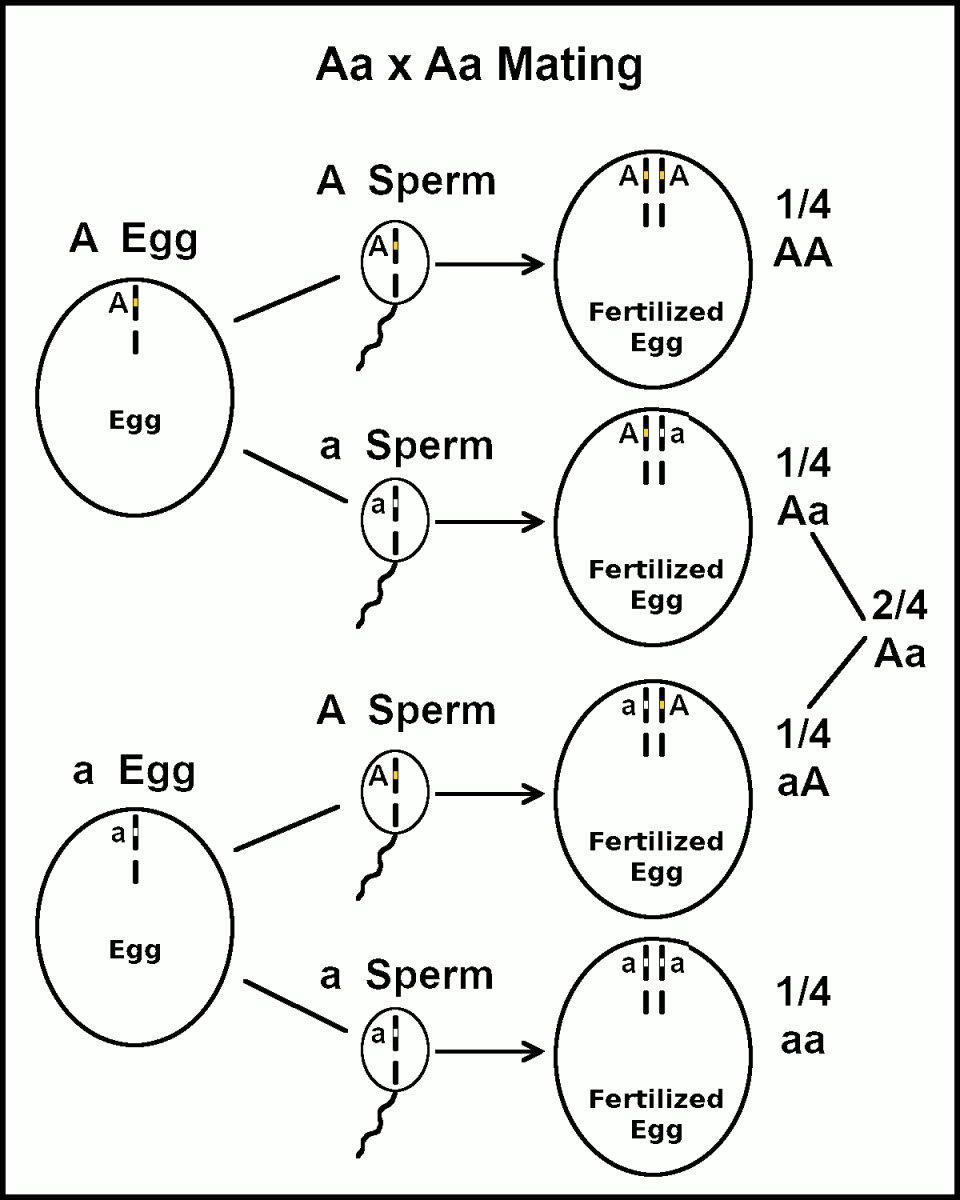
The outlines of the eggs, sperm and fertilized egg can be ignored. That leaves only the chromosomes with the A and a genes. And the orientation can be changed from horizontal to vertical. This gives a more accurate version of the first graphic in this post.
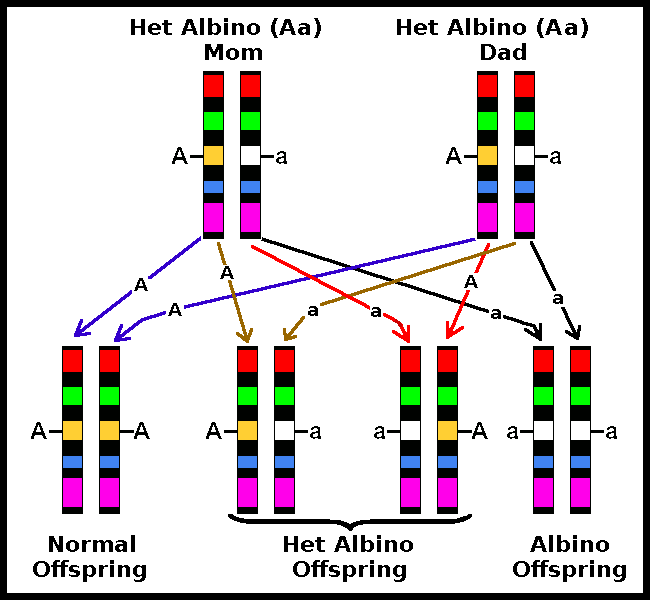
For simplicity, the graphic can be converted into a Punnett square:
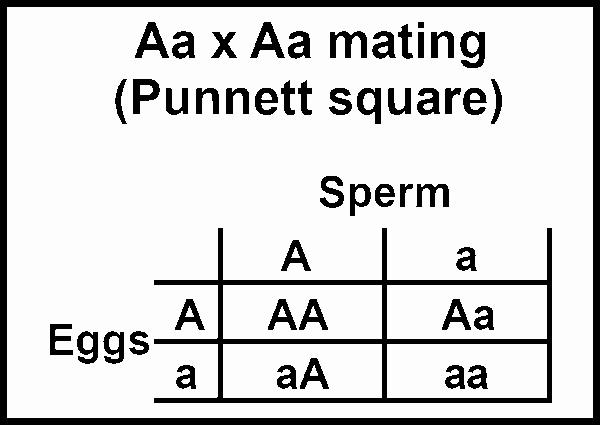
The Punnett square can be put on a single line as “Aa mated to Aa produces 1/4 AA, 2/4 Aa, 1/4 aa.” That can be further abbreviated to “Aa x Aa → 1/4 AA, 2/4 Aa, 1/4 aa.”
Suggested practice problems. What are the offspring’s genes in these problems? What do both parents and offspring look like?
A = normal gene (dominant), a = albino mutant gene (recessive).
AA x AA → ???
AA x Aa → ???
AA x aa → ???
Aa x aa → ???
aa x aa → ???
Y = yellowbelly mutant gene (codominant), y = normal gene (codominant).
YY x yy → ???
Yy x yy → ???
Yy x Yy → ???
P = pinstripe mutant gene (dominant), p = normal gene (recessive).
pp x PP → ???
pp x Pp → ???
Pp x Pp → ???
-
The Following User Says Thank You to paulh For This Useful Post:
 Posting Permissions
Posting Permissions
- You may not post new threads
- You may not post replies
- You may not post attachments
- You may not edit your posts
-
Forum Rules
|






















 Reply With Quote
Reply With Quote